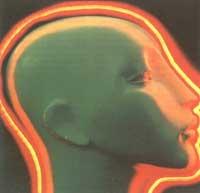Michel Eugene Chevreul
Elhuyar Fundazioa
In 1809 he began to study soaps and as is known, most of the time they are made from fats. It treated fats with hydrochloric acid, leaving insoluble organic acids floating in aqueous solution. It isolated stearic acid, palmitic acid and oleic acid, most important constituents of fats and oils. However, the whale's sperm behaved differently, so Chevreule said it was not fat or wax.
In 1825 Chevreule took the patent to manufacture candles using these fatty acids (Gay-Lussac also simultaneously). Today, due to the little use we make of candles, this advance of Chevreul and Gay-Lussac is not very important, but the XIX. It had great advantages for the society of the mid-twentieth century. The fatty acid candles were stronger and brighter than the old sego candles, burned more easily and their smell was not so bad.

Chevreule, however, in addition to fats, worked in other fields. In 1815 he isolated the sugar from the urine of a diabetic and found that it was the same sugar as the vine. This is when diabetes is started to be treated as a disease related to sugar metabolism.
Chevreul also pioneered the study of organic substances and published in 1824 a book on this subject. He later went on to investigate the psychology of color and tried to give some general rules in this matter.
In his last years, especially since the nineties, he knew better than anyone the psychological influence of old age and there is no obstacle to consider Chevreul as the precursor of gerontology.
He lived a hundred and three years without having to stop at work. During his long life he had no time to retire. He learned and saw many things in his life. As a young man he had seen people cut their neck with the French Revolution and the guillotine. In old age the Eiffel Tower is also built.
He died in Paris on 9 April 1889 (one hundred years ago) and Elhuyar celebrated the centenary of the French chemist Chevreul. We believe it deserves this mention in Science and Technology.





